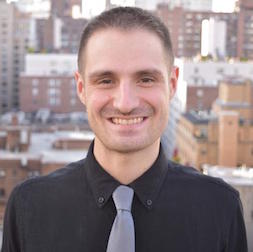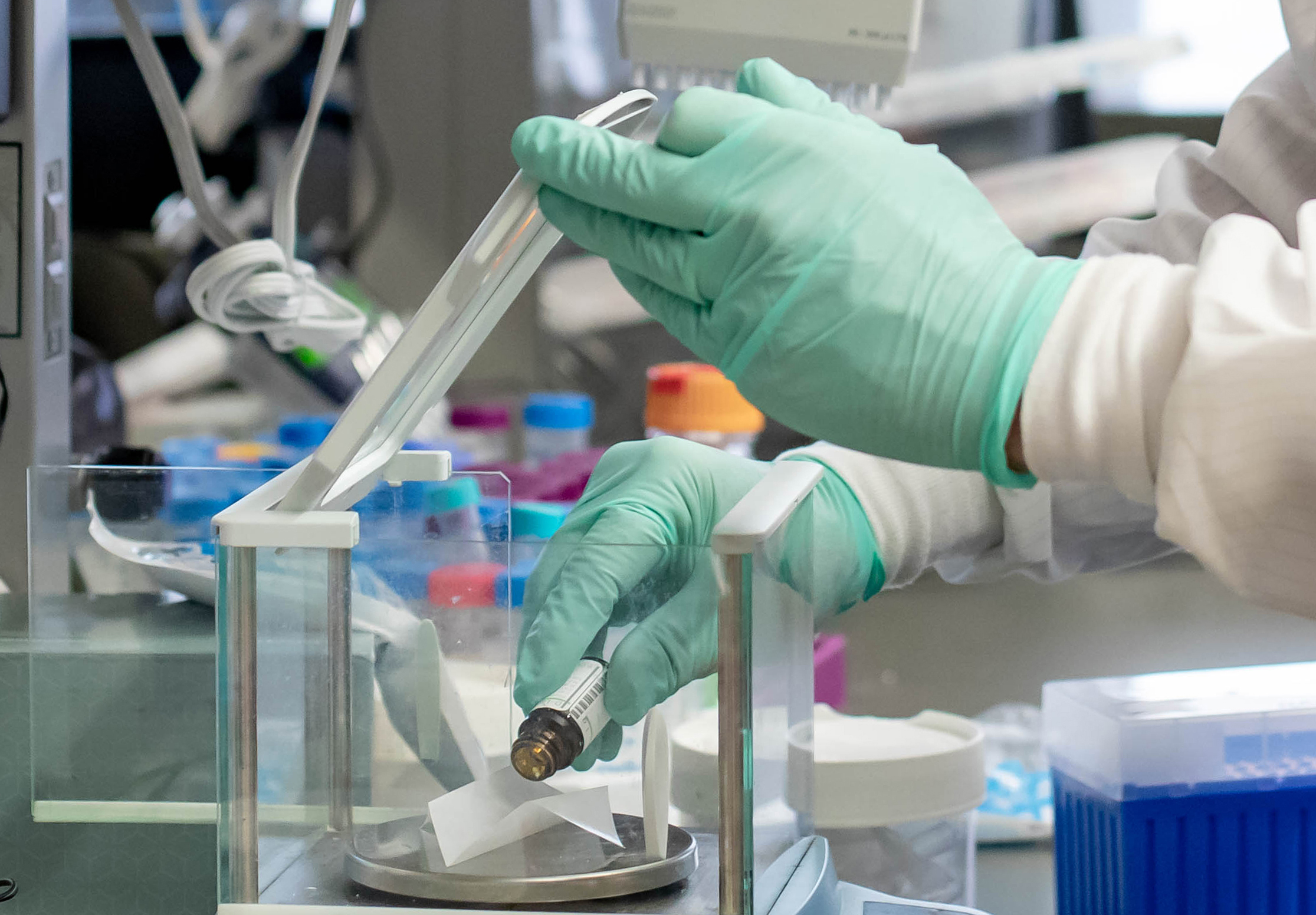The world became aware of CRISPR about the time Alex Pérez, MD, PhD, began his graduate program in computer science and bioinformatics at Weill Cornell. CRISPR is a tool that scientists use to ease and speed the editing of human cells and it seemed a good bet to revolutionize both medical research and clinical care. Pérez recognized this, but was also among those struck by its potential for errors, some of which could be catastrophic.
 That’s why, before he was out of graduate school (a time in which he was simultaneously completing medical school), Pérez created GuideScan, a software that to date thousands of researchers around the world use regularly to dramatically decrease the risk for CRISPR errors. It does this by helping researchers develop precisely targeted guide RNAs, the “instructions” that direct CRISPR enzymes to the area of a cell’s DNA a researcher or clinician wants to cut. GuideScan’s creation earned Pérez publications in prominent science journals, including Nature Biotechnology, as well as Forbes magazine’s 30 Under 30 recognition for science in 2018.
That’s why, before he was out of graduate school (a time in which he was simultaneously completing medical school), Pérez created GuideScan, a software that to date thousands of researchers around the world use regularly to dramatically decrease the risk for CRISPR errors. It does this by helping researchers develop precisely targeted guide RNAs, the “instructions” that direct CRISPR enzymes to the area of a cell’s DNA a researcher or clinician wants to cut. GuideScan’s creation earned Pérez publications in prominent science journals, including Nature Biotechnology, as well as Forbes magazine’s 30 Under 30 recognition for science in 2018.
In the years since, Pérez – now a third-year anesthesia research scholar resident in the UCSF Department of Anesthesia and Perioperative Care – has created additional bioinformatics tools to ensure ever more precise guide RNAs. In addition, as a research fellow at the National Cancer Institute (NCI), he has developed a guide RNA library slated to become the library used by the NIH core facility for conducting screens of coding genes.
Not a bad start to a career.
Developing GuideScan
In 2020, CRISPR won the Nobel Prize in chemistry, at least in part because of its ability to quickly and precisely cut areas of a cell’s DNA. This ability revolutionized researchers’ ability to pinpoint disease causes and advance precision medicine. CRISPR’s accuracy depends on guide RNAs, but if the guide RNAs are not specific to a target, they can wind up not only cutting the desired area, but unknowingly cutting other areas as well. If those off-target cuts result in translocations, they can muddy research results and, in clinical practice, cause the types of flaws that are the hallmarks of many cancers.
Those are big concerns that researchers and clinicians must account for as they seek the few right places to cut. That’s where Pérez’s expertise in string algorithms – finding patterns within larger patterns – entered the picture. “The human genome is essentially a 3.3 billion character string and we might be looking for 20 characters within it. The problem is that CRISPR is evolutionarily selected for aggressive cutting and choosing a guide RNA that is accurate to a target is not always guaranteed, especially given the individual differences in humans.”
GuideScan was Pérez’s successful effort to address this concern. “It guides researchers to where they want to go and only where they want to go,” he says.
CRISPR Specificity Correction
Next, Pérez focused on helping researchers who did not use GuideScan to create their guide RNA libraries. His goal is to help avert potential errors that might slow important research or undermine confidence in its accuracy.
 Consider how this might affect a research team seeking a novel gene in cancer development. The team might isolate a few potential targets, then use their CRISPR guide RNAs to alter the DNA in the cancer cells and test how efficiently those cells are killed.
Consider how this might affect a research team seeking a novel gene in cancer development. The team might isolate a few potential targets, then use their CRISPR guide RNAs to alter the DNA in the cancer cells and test how efficiently those cells are killed.
“The problem,” says Pérez, “is that some of the guides might have been dirty guides in that they didn’t just hit the gene the researcher was trying to hit, so you can't tell whether cell survival rate is due to you hitting the gene or other areas of the genome. That’s why I developed - CSC [CRISPR Specificity Correction].”
CSC generates a custom model that computes how much of guide RNA’s effect is due to off-target cutting and helps individual researchers correct their results to account for off-target effects. “By increasing the accuracy of the screen by 200 percent, you clean up the noise in the experiment and increase confidence in the results,” says Pérez.
The CSC website, open to all researchers, will enable something called specificity-matched controls, which helps researchers design control guides that are statistically identical to the specificity distribution of the guides in their library. This method reveals off-target toxicity and how it affects cell survival. “When researchers apply the [specificity control trained] model to their screens, they can correct only for off-target effects, so there is no over-correction and the model is even more accurate,” says Pérez.
What’s All This Got to Do With Anesthesiology?
Pérez explains that his work on guide RNAs and cancer research are actually what led him to choosing anesthesia as his special ty. In cancer, it’s rarely the primary tumor that kills you, it’s often the metastasis, and there is a long-noted, but controversial connection between the volatile anesthetics and cancer recurrence or metastases,” he says. Intrigued by the potential for that connection to elucidate the poorly understood metastatic process, Pérez hopes to help define the basic biology of metastasis by using the guide RNA library he created for NCI to conduct a series of experiments using anesthetics and guide RNAs in migration assays.
ty. In cancer, it’s rarely the primary tumor that kills you, it’s often the metastasis, and there is a long-noted, but controversial connection between the volatile anesthetics and cancer recurrence or metastases,” he says. Intrigued by the potential for that connection to elucidate the poorly understood metastatic process, Pérez hopes to help define the basic biology of metastasis by using the guide RNA library he created for NCI to conduct a series of experiments using anesthetics and guide RNAs in migration assays.
“If we can better understand the metastatic process, we will be better positioned to stop metastases in their tracks,” he says. Such work is a powerful argument for basic science. As Pérez notes, “My work, by design, does not have immediate or obvious applications to anesthesia or clinical care, but that's because most very basic work, before it finds application, has to find maturity in basic science.”
Written by Andrew Schwartz
